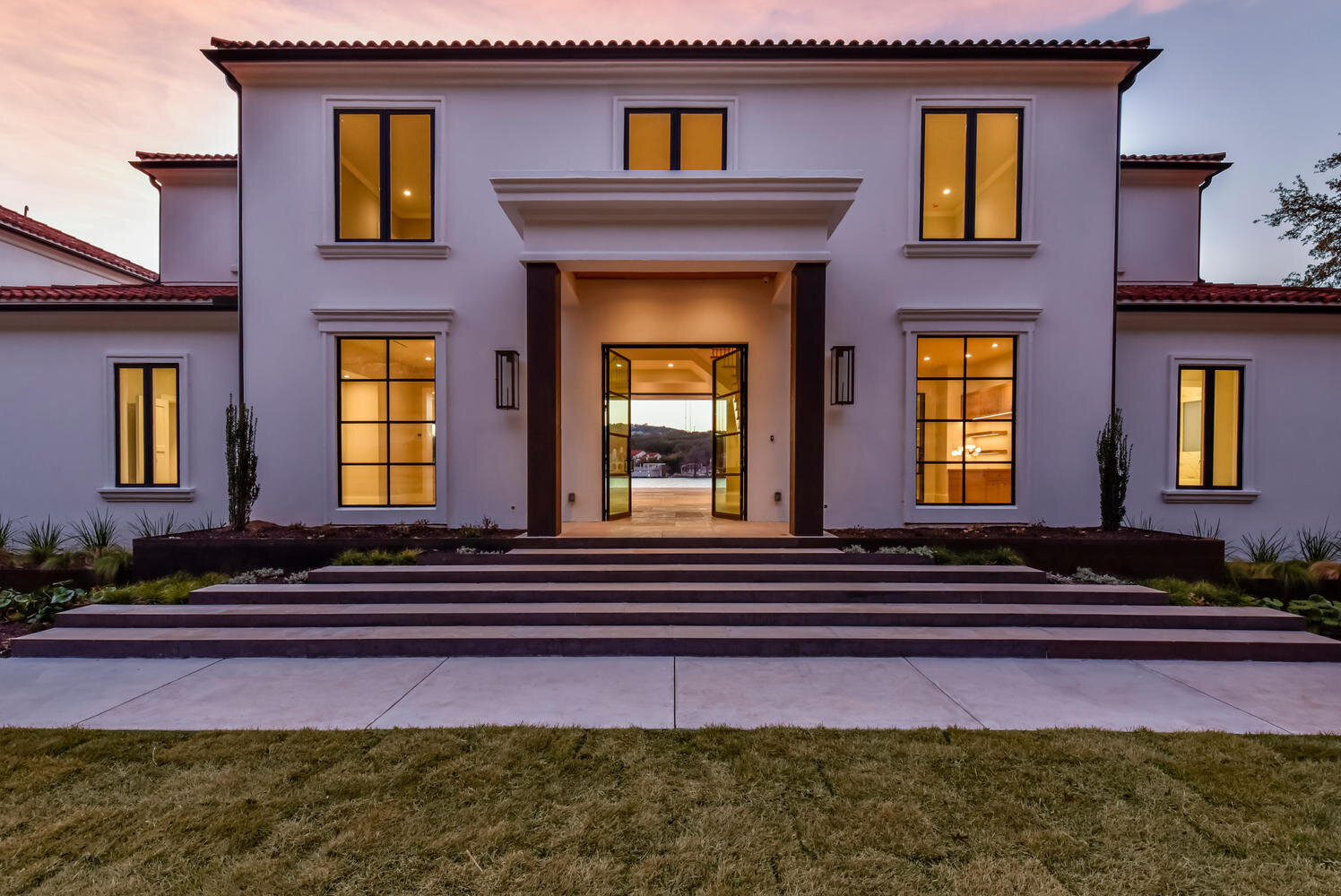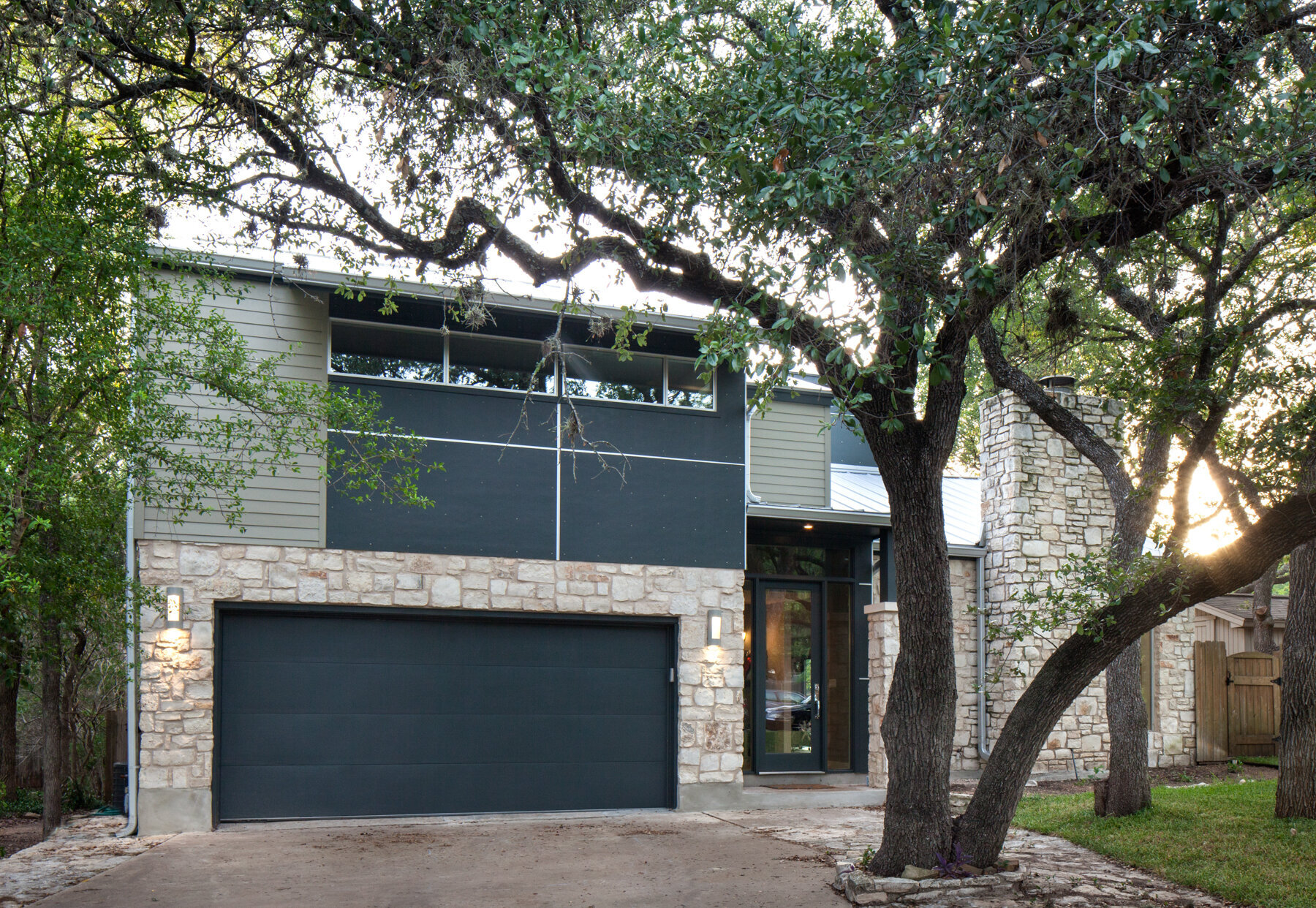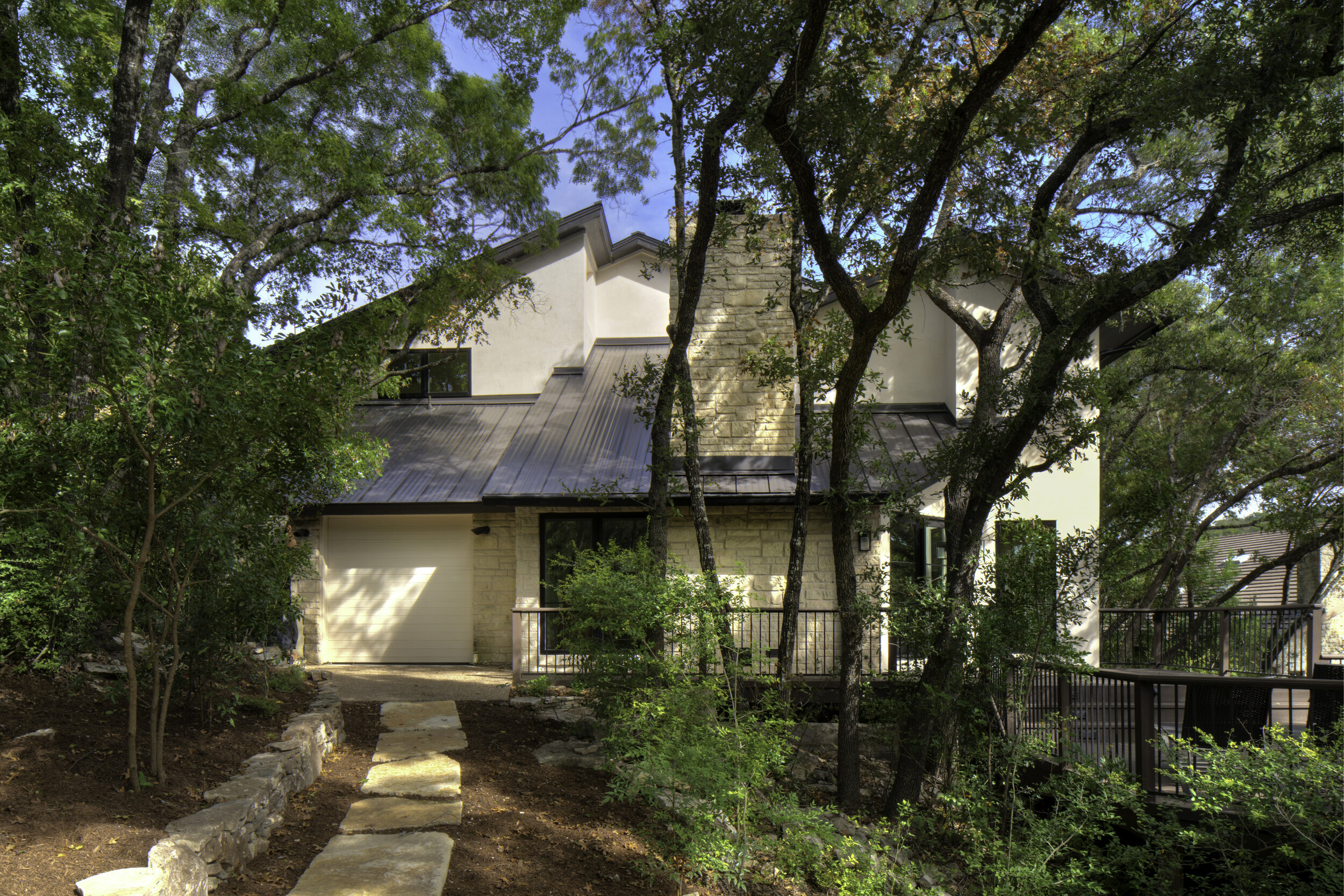How to Create a Path to the Front Door
Our Austin Architects Explain How to Design a Welcoming Walkway That Will Lead Guests from the Curb to the Door
Whether you are building your first house or planning your first remodel, the work isn’t complete until you create a path to the front door. Well-designed pathways effortlessly direct guests from the curb to the entrance. Without a welcoming walkway, guests would be left guessing how to enter the home, and homeowners would become frustrated with unguided treks from the car to the door (often struggling with groceries in tow). Our Austin architects explain how to create a path to the front door. We outline defining the approach to the home, plotting the course of the walkway, and making material selections. Your guiding path to welcoming walkway design is here!
How to Create a Path to the Front Door with the Intimacy Gradient in Mind
To create inviting paths and approaches, architects and landscape designers use the principles of the intimacy gradient, outlined in A Pattern Language by Christopher Alexander. The intimacy gradient is the idea of ordering spaces in the home from public areas in the front to private areas in the back, each with a sequence of events that transition from one to the other. In other words, the front walkway of the home is more than a paved path. It is the first invitation to enter a private space—it is the journey into your home. The path to the front door should serve as a transition from the shared street to the intimate interior. In addition, it should relate to the home’s design and feel like a defined space in itself.
A Welcoming Walkway Should Define the Approach to the Home
The path from the curb to the front door should feel welcoming and define the approach to the home. Here are a few goals to keep in mind when designing a walkway.
Lead Guests to the Front Door
A welcoming walkway should be designed with guiding lines that lead guests to the house without question and draw attention to the front door. When visitors set out on their journey across the path, the destination should be clear.
Highlight the Entrance
Paths should highlight the main entrance of the home, accenting the front door or the front porch. Highlight the entry by bringing in complementing materials to the pathway or adding features like landscaping.
Highlight the entry by bringing in complementing materials to the pathway or adding features like landscaping.
Photo by DK Studio
Provide Accessibility
The walkway to the home should be accessible. Think about the journey from the curb to the door. How does it work for guests and your day-to-day life? While it is nice to have an extended approach, you don’t want the path to be too long or the entrance too far from the street.
Connect to the Driveway
Consider connecting the front walkway to the driveway to increase accessibility and ease. Make sure the path is clear and define the two spaces with different materials. For example, a concrete driveway could transition to a brick or gravel path to the front door.
Create a Transition
Most importantly, the path to the front door should create a transition from the public space of the street to the home’s private interior. Directing sightlines and coordinating materials form indoor-outdoor connections that offer an easier transition for a peaceful and unified feel.
Decide How to Plot the Path to the Front Door
The plot of the path to the front door will affect the entire feel of the home. Here are two considerations for plotting your route.
Straight Paths
Straight paths are streamlined and direct, offering a quick and efficient route to the house. Typically, straight and symmetrical lines create a formal feel, which can add to the grandeur of the exterior. However, the efficiency of a linear path doesn’t offer the tranquil approach a winding path can provide.
Typically, straight and symmetrical lines create a formal feel, which can add to the grandeur of the exterior.
Photo by Amity Kett
Winding Paths
Winding paths meander through the yard, creating a relaxing approach that allows guests and homeowners to leave the outside world behind on their journey to the front door. Winding paths are also an excellent option for designing around trees. Forming a path through the landscape creates a serene feel.
Select Materials for the Walkway Design
The path’s appearance and texture create an experience for all the senses. Not only will you see the path, but you will also feel it beneath your feet and hear it as you approach the front door. Here are materials to consider for the front walkway.
Mulch
Mulch paths look casual, rustic, and informal. A mulch pathway is perfect for homes in rural settings, and they provide a soft feel underfoot.
Gravel
Gravel is a practical walkway material, especially for sites with drainage concerns. Gravel paths also have a peaceful sound when walked across.
Gravel is a practical walkway material.
Photo by DK Studio
Brick
Brick is a classic option for front walkways. Bricks come in a range of colors and can be laid in different patterns for visual appeal.
Stone
Stone paths can take on an old-world or modern look, depending on the cut and pattern lay. For example, broken flagstone has a European feel, while square-cut limestone has a sleeker appearance.
Stone paths can take on an old-world or modern look.
Photo by DK Studio
Concrete
Concrete is a versatile material that can be formed, textured, and colored to fit almost any style and path design.
Concrete can fit almost any style and path design.
Mixed Materials
Feel free to use more than one material on the journey. Mixing materials can create visual interest, break up the path, and signal transitions. For example, a walkway of stone pavers with gravel borders offers the visual beauty of stone with the charming sound of gravel.
Mixing materials can create visual interest, break up the path, and signal transitions.
Photo by DK Studio
Accent the Path to the Front Door with Design Elements
You can continue to define the path to the front door with accents. Here are a few ideas.
Gate
A gate along the path provides a beautiful transition between public and private areas. After crossing the gate, visitors recognize they are entering a new space.
Lighting
Installing landscape lighting along the path to the front door adds visual interest and creates a clear path at night. Lighting highlights the entrance well after the sun sets.
Landscaping
Landscaping brings color, texture, and softness to the front walkway. Adding plantings will help bring attention to the path and soften the approach to the home.








